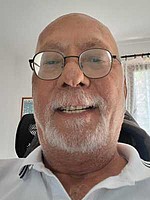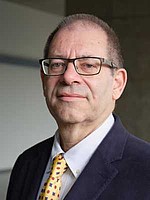Amphiphilic Gels and Networks
Session Chairs
Michael Lang (Leibniz-Institute of Polymer Research, Dresden, Germany)
Sebastian Seiffert (Johannes Gutenberg University, Mainz, Germany)
Invited Speakers

Nico Bruns (Technical University of Darmstadt, Germany)
Bio-inspired amphiphilic polymer conetworks (shared talk with Hydrogels and Ionogels)
Amphiphilic polymer conetworks (APCNs) already possess superior mechanical properties compared to many conventional hydrogels. Still, their strength, extensibility, and toughness can be further improved by reinforcement with peptide blocks and cellulose nanocrystals, inspired by the hierarchical reinforcement of soft materials found in nature. This, as well as the double-emulsion microfluidic preparation of APCN microcapsules, will be presented at the conference.

Patricia Dankers (Eindhoven University of Technology, The Netherlands)
Complex tissue-inspired materials based on supramolecular polymers (shared talk with Bio-Medical Applications)
The integration of synthetic components into biological systems will shape the future of regenerative medicine and drug delivery. In nature, tissues and cells are formed by complex, intricated molecular compositions held together by both covalent and directed non-covalent interactions. They can be regarded as complex molecular systems. The formulation of an artificial extracellular matrix from synthetic building blocks that can assemble and disassemble into supramolecular polymers on demand is proposed to lead to complex tissue-inspired materials. Making use of supramolecular monomers, but also (microfluidic) processing techniques different time and length scales are being addressed.

Bela Ivan (HUN-REN Research Centre for Natural Sciences, Budapest, Hungary)
Bicontinuous Nanophasic Amphiphilic Conetworks, their Gels and Nanohybrids for Advanced Applications: from Intelligent Drug Release to Highly Efficient Nanocatalysts and Beyond (Shared talk with Advanced Synthesis & New Architectures)
Our research focuses on the synthesis, structure-property investigations and application possibilities of polymer conetworks, composed of covalently linked hydrophilic and hydrophobic polymers chains. Utilization of the bicontinuous nanophase separated morphology of such conetworks in various fields, especially in the biomedical areas and as nanohybrid materials, is one of the recent challenging tasks with this emerging class of crosslinked macromolecular assemblies. This presentation will deal with the latest achievements in our laboratories in these research and development fields.

Arthi Jayaraman (University of Delaware, USA)
Combining multi-scale modeling and simulations with data-driven computational methods to understand structures in aqueous methylcellulose solutions (shared talk with Hydrogels & Ionogels)
This talk will highlight our recent work in the context of aggregation and gel formation in methylcellulose (MC) solutions. The goal of our research in this topic is to use computations to link MC design to assembled MC chains' structures and sol-gel phase behavior. Comparison to experiments will be provided throughout the talk.

Oguz Okay (Istanbul Technical University, Republic of Türkiye)
Silk fibroin-based multiple-shape-memory organohydrogels (shared talk with Hydrogels & Ionogels)
In contrast to synthetic gels, their biological counterparts such as cells and tissues have synergistic biphasic components comprising both hydrophilic and lyophilic phases, which gives them some special capabilities, including adaptive biomechanics and freezing tolerance. Hydrogels containing both hydrophilic and lyophilic phases, termed organohydrogels (OHGs), are capable of mimicking biological systems, and could have great potential for various applications. Here, we present a straightforward strategy to obtain adaptive OHGs with tunable and programmable mechanics and multi-shape-memory behavior.

Costas Patrickios (University of Cyprus, Cyprus)
Amphiphilic Polymer Conetworks: Self-assembly, Mechanical Properties, Dynamic Covalent Cross-links, and an Application
We will present our recent work on amphiphilic polymer conetworks (APCNs), highlighting the self-healing capability and recyclability conferred upon these materials by their dynamic covalent cross-links. Furthermore, we will indicate that our APCNs are highly stretchable, upto 10-fold, despite their high water content, ~80%. Most importantly, we will share with you our efforts to instill into these materials aqueous self-assembly with long-range ordering. Finally, we will present an energy-related application of our APCNs.

Sebastian Seiffert (Johannes Guttenberg University Mainz, Germany)
Amphiphilic and Adaptive Polymer Gels with Model-Network Structure
Amphiphilic polymer gels are composed of a polymer network with both hydrophilic and hydrophobic parts. They feature favorable properties with delicate dependency on the environmental medium polarity, such as environmentally sensitive viscoelasticity and selective permeability. To truly exploit this potential for applications, it is necessary to understand the interplay between the network nano- and microstructure and the resulting gel properties. We target at gaining such understanding in view of the preparation conditions, the resulting network structures, and the yet resulting gel properties, primarily focusing on their viscoelastic mechanics and permeabilities. This is done by adaption of the tetra-PEG approach for model-network synthesis to preparing amphipilic model networks of two kinds: irreversibly and reversibly crosslinked.
Contributed talks and posters
... will be continuously added until the abstract acceptance deadline.